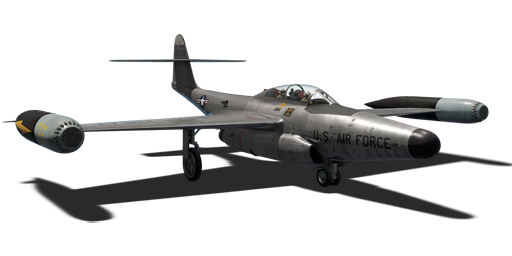


The F-89D Scorpion was designed and built to be an all-weather interceptor intended to neutralize any potential invading Soviet bomber force. The USAAF was intent of replacing the P-61 Black Widow with another night fighter, one specifically which would fly faster (minimum 850 km/h / 530 mph) almost assuredly requiring the usage of jets. To round out the aircraft for ground attack if needed, it would also need to accommodate 1,000 lb bombs and eight larger rocket types externally. Initial wind tunnel testing of the fighter determined that the proposed swept-wings were insufficient at slow speeds and were changed out with straight wings. Though causing a loss of high-end performance, increased stability at low speeds was necessary. The F-89D was a variant using 104 Folding-Fin Mighty Mouse Aerial Rockets and underwing HVAR rockets. The rockets worked with a proximity fuse, and allowed the fighter to launch a salvo to a bomber and then reacquire another bomber, however the rockets were very inaccurate, which meant that large salvos were needed for one or two rockets to explode near the target.
It was introduced in Update 1.91 "Night Vision". The F-89D is a high altitude interceptor and that translates very well to its performance in War Thunder. It is armed with proximity fuse rockets, that explode near the aerial target. This rockets have very low accuracy and require large salvos to be of any use, but they are specially good against enemy bombers, of course, not so much against small fighters. The F-89D has a mediocre flight performance, while it has a good top speed thanks to the afterburner of its engine, it wont be able to dogfight with most aircrafts, and the acceleration at low speeds is very bad thanks to the weight of the plane. For simulator battles, it has access to a radar that is very useful to find targets at high altitudes, but not so much at low altitudes.
flaps
flaps
flaps
brake
104 × FFAR Mighty Mouse rockets
8 × HVAR rockets







 2 x (130 / 340 / 600) %
2 x (130 / 340 / 600) % 
 2 x 202 %
2 x 202 % 

Flight performance | |
|---|---|
Survivability |
|---|
Weaponry |
|---|